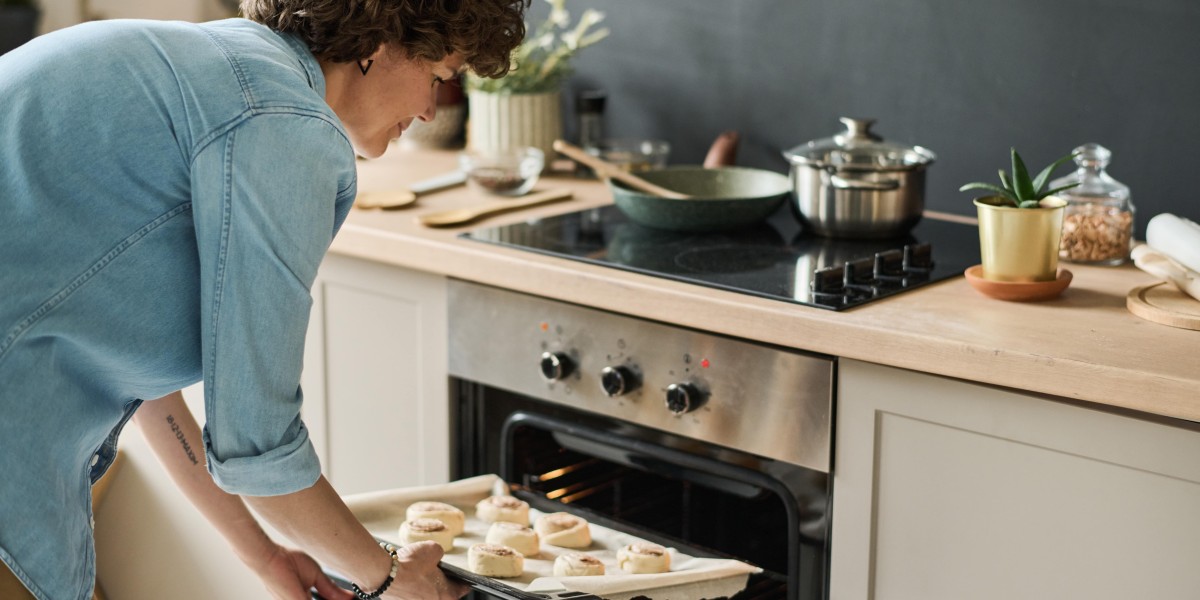The Benefits and Design Considerations of a Kitchen with a Built-In Oven
In modern kitchen design, built-in ovens have ended up being a prominent feature, offering both performance and looks that cater to contemporary lifestyles. This short article explores the advantages of including a built-in oven into the kitchen area and highlights essential design considerations to make sure a cohesive and useful kitchen environment.

Understanding Built-In Ovens
Built-in ovens are designed to be perfectly integrated into Kitchen With built In oven cabinetry, which separates them from conventional freestanding ovens. These appliances come in various setups, including single-wall ovens, double-wall ovens, and even microwave that share the exact same integrated cabinet area.
Common Types of Built-In Ovens
| Type | Description | Ideal Use |
|---|---|---|
| Single Wall Oven | A basic oven with one compartment for baking and roasting. | Little cooking areas or everyday baking. |
| Double Wall Oven | 2 different oven compartments enabling simultaneous cooking. | Large households or regular bakers. |
| Combination Oven | A microwave and traditional oven in one system. | Quick meals and flexible cooking alternatives. |
| Steam Oven | An oven developed specifically for steam cooking. | Health-focused cooking and detailed dishes. |
Advantages of Built-In Ovens
The appeal of built-in ovens can be credited to numerous crucial advantages, consisting of:
1. Space Efficiency
Built-in ovens are designed to fit within existing cabinets, maximizing important floor area. This feature is particularly helpful in smaller kitchens, where every square foot counts.
2. Structured Appearance
The seamless integration of a built-in oven produces a sleek look in the kitchen. Readily available in different surfaces, built-in ovens can match or match kitchen cabinetry, offering a contemporary and unified design visual.
3. Improved Functionality
Built-in ovens typically offer sophisticated functions, such as smart innovation, several cooking modes, and even self-cleaning choices. This can boost cooking experiences and improve the performance of meal preparation.
4. Improved Accessibility
With correct installation of a built-in oven, users can increase accessibility, avoiding the requirement to flex over to reach a lower oven compartment. Eye-level cooking appliances permit cooks to monitor their meals easily and minimize the risk of burns from bending down to examine on a baking product.
5. Energy Efficiency
Numerous modern built-in ovens make use of innovative cooking technology that can lead to lower energy intake. Features like convection cooking can minimize cooking times while guaranteeing even heating, ultimately saving energy.
Style Considerations for a Kitchen with Built-In Ovens
While built-in ovens provide many benefits, careful factor to consider in the style phase is vital to optimize their benefits and incorporate them effectively into the kitchen design. Here are some key aspects to consider:
1. Cabinet Configuration
When planning for a built-in oven, house owners need to thoroughly think about cabinet layouts and configurations. Adequate ventilation is crucial for appropriate operation. It's necessary to leave sufficient space for air flow, which can vary depending on the oven design.
2. Height Preference
The setup height of the oven ought to be identified based upon the primary users. A built-in oven located at eye level can make it easier to utilize, particularly for those who frequently prepare.
3. Complementary Appliances
In a kitchen setting, built-in ovens often complement other built-in appliances such as microwave ovens and warming drawers. Selecting appliances that work well together can further enhance the kitchen's style.
4. Aesthetic Choices
Choosing finishes and colors that balance with the overall kitchen style is important. Built-in ovens are offered in numerous choices, including stainless-steel, black, and even custom cabinet ends up that can disappear effortlessly into the cabinets.
5. Spending plan Considerations
Built-in ovens can range considerably in cost, from budget-friendly choices to high-end designs loaded with features. It's vital to set a reasonable budget that enables the wanted requirements without compromising the overall kitchen renovation.
Frequently asked questions
1. What is the difference in between a built-in oven and a freestanding oven?
Built-in ovens are integrated into cabinets and provide a smooth look, while freestanding ovens are standalone systems that can be moved easily.
2. Do built-in ovens require professional setup?
Yes, built-in ovens usually need expert installation due to their integration with cabinetry and electrical requirements.
3. Are built-in ovens more pricey than conventional ovens?
In general, built-in ovens can be more pricey due to their setup procedure and advanced functions, however there are lots of alternatives readily available to fit varying budget plans.
4. How do I maintain a built-in oven?
Regular cleaning and upkeep, such as utilizing the self-clean function, examining seals, and ensuring proper ventilation, are essential for keeping a built-in oven.
5. Can built-in ovens be used in smaller kitchens?
Yes, built-in ovens can be beneficial in smaller kitchens since they maximize space efficiency and can be set up at eye level for benefit.
Incorporating a built-in oven into a kitchen style is an exceptional option for enhancing functionality and looks. By thinking about the design tips and benefits discussed in this short article, house owners can produce a harmonious kitchen space that accommodates their cooking requirements while looking trendy and elegant. Whether renovating an existing kitchen or developing a brand-new one, built-in ovens provide a level of elegance and functionality that lines up seamlessly with modern cooking practices.







